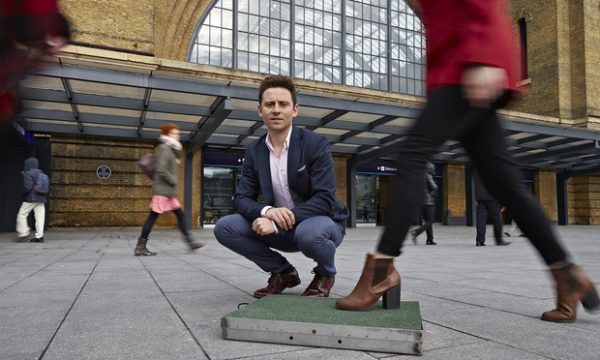A recent invention could be the most energy efficient way of lighting yet.
Graduate of Loughborough University, Laurence Kemball-Cook, was doing a placement year at the energy company Eon when he came up with his idea. His job was to find a way to power street lighting using solar energy and wind which was unsuccessful due to the shade of city centres. This made him think of other potential ways of producing energy.
Kemball-Cook said:
My idea was a floor tile would convert the kinetic energy from a footstep into electricity. Every time someone steps on the tile, they generate 7 watts of power. The energy is stored within batteries, and then used to power lighting when it’s needed. It’s an off-grid power source for cities. Investors wouldn’t invest without tiles in the ground, so I broke into a building site on the south bank of the Thames at 2am, installed the product illegally, took photos and put them on our website saying: ‘Celebrating our latest installation’. I closed a deal with Westfield pretty soon after that.
He added:
When you stand on a tile, it sends out wireless data. This is useful for crowd flow modelling seeing how people move through cities. You can use it to control lighting more efficiently. It’s also a really key way for retailers to know how many people are insisting their shops. We imagine Google will cover streets with this in the future and use the data in interesting ways.
The company called Pavegen, despite being new technology and having only 30 members of staff, have already worked with companies such as Coca Cola and Siemens. Last year, they set up a football pitch in Rio connecting the Astroturf tiles to street lights so that people could play after dark. Pavegen also have tiles at Heathrow terminal 3 and future plans include installing them outside the White House.
The current disadvantage of these tiles is that they cost around £1,250 to cover one square metre.
Kemball-Cook said:
The holy grail for us is to make our product the same cost as normal flooring. It takes a lot of time and investment to get there. Solar took 58 years to get to the point it’s at now. I reckon we’ve done about the first 20 years with our technology. Our investors know it’s not an overnight play. We are establishing a whole industry that never existed before.
Image belongs to the Guardian




